If you've recently upgraded to Windows 11 and find that there's no sound coming from your computer, you're not alone. Many users experience the 'No audio output device is installed' error, which can prevent you from playing music, participating in video calls, or using audio peripherals like speakers and headphones. Fortunately, there are several methods to resolve this issue.
Reinstall the audio driver from the manufacturer's website
A common cause of the 'No audio output device is installed' error is an outdated or corrupted audio driver. Reinstalling the latest driver from your computer manufacturer's website can often resolve the problem.
Step 1: Determine your computer's make and model. Open the Start menu, type msinfo32, and select 'System Information' from the search results.

Step 2: In the System Information window, locate the 'System Manufacturer' and 'System Model' details. You'll need this information to find the correct driver on the manufacturer's website.

Step 3: Open your web browser and navigate to your computer manufacturer's official support website. Search for the latest audio driver compatible with your system model and Windows 11.

Step 4: Download the appropriate driver and run the installer. Follow the on-screen instructions to complete the installation. You may need to restart your computer afterward.
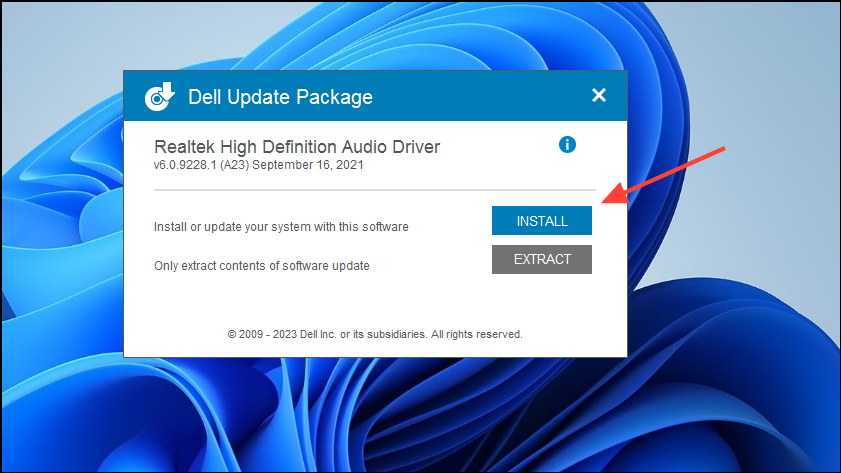
Reinstall the audio driver
If updating the driver from the manufacturer's website doesn't resolve the issue, you can try reinstalling the audio driver using Device Manager. A corrupted driver can prevent Windows from recognizing your audio devices.
Step 1: Open the Start menu, type Device Manager, and press Enter to launch it.

Step 2: In Device Manager, expand the 'Audio inputs and outputs' section.

Step 3: Right-click on your audio device and select 'Update driver'.

Step 4: Choose 'Browse my computer for drivers'.

Step 5: Click on 'Let me pick from a list of available drivers on my computer'.

Step 6: Ensure that 'Show compatible hardware' is checked. Select 'Generic Software Device' from the list and click 'Next'.
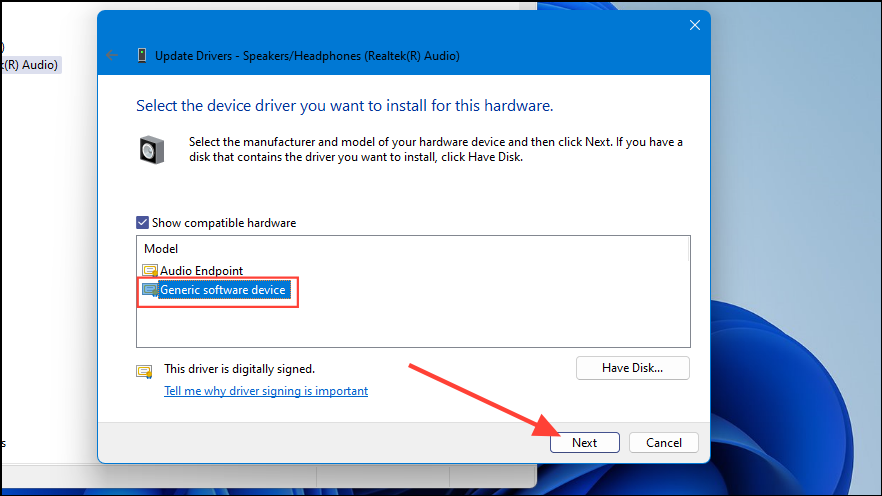
Step 7: Once the driver is installed, close Device Manager and restart your computer to check if the issue persists.
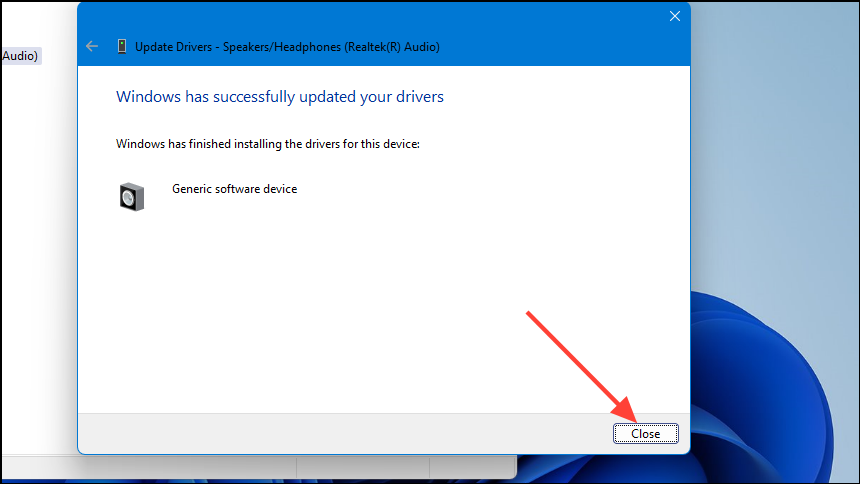
Ensure audio services are running
Windows relies on certain services to manage audio output. If these services aren't running, you may encounter the 'No audio output device is installed' error. Verify that the necessary audio services are active.
Step 1: Open the Start menu, type services.msc, and press Enter to open the Services window.
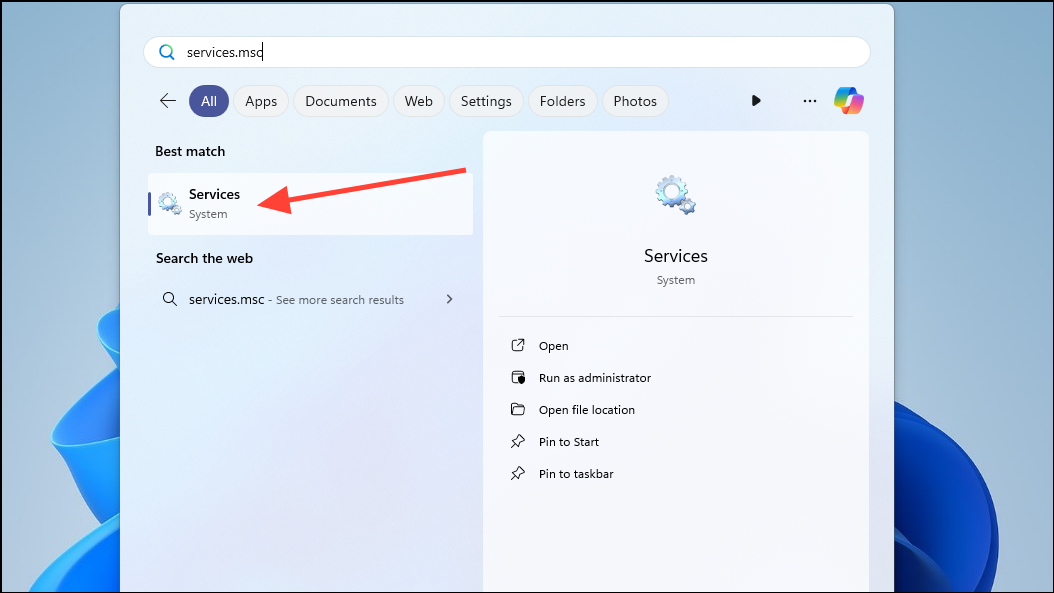
Step 2: In the Services list, locate 'Windows Audio Endpoint Builder'. Right-click on it and select 'Properties'.
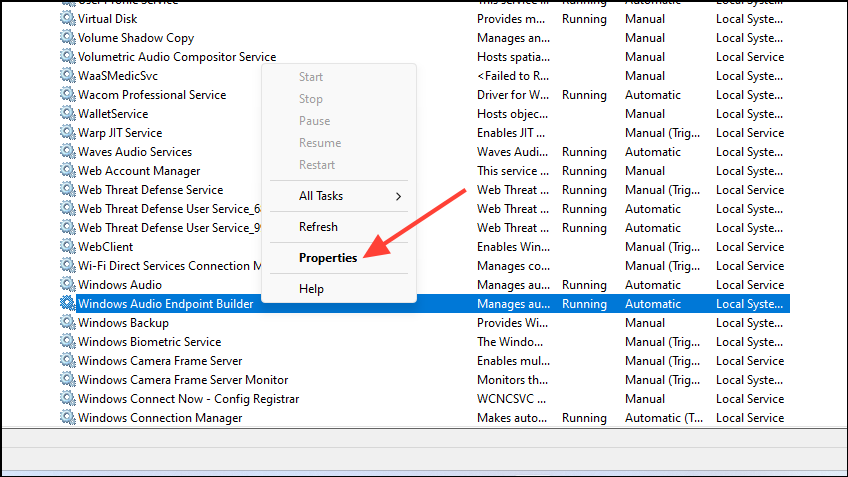
Step 3: In the Properties window, set the 'Startup type' to 'Automatic'. Click 'OK' to save the changes.

Step 4: Back in the Services window, right-click on 'Windows Audio Endpoint Builder' again and select 'Restart' if it's not running.
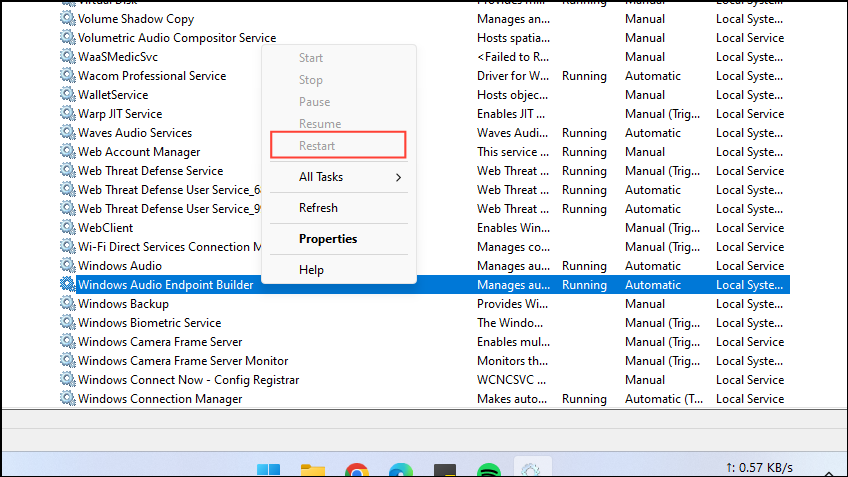
Step 5: Close the Services window and check if your audio is working properly.
Run the audio troubleshooter
Windows 11 includes a built-in audio troubleshooter that can automatically detect and fix common sound problems. Running this tool might resolve the 'No audio output device is installed' error.
Step 1: Right-click on the sound icon in the taskbar and select 'Troubleshoot sound problems'.

Step 2: Alternatively, open 'Settings' and type troubleshoot in the search bar at the top. Select 'Troubleshoot other problems' from the results.
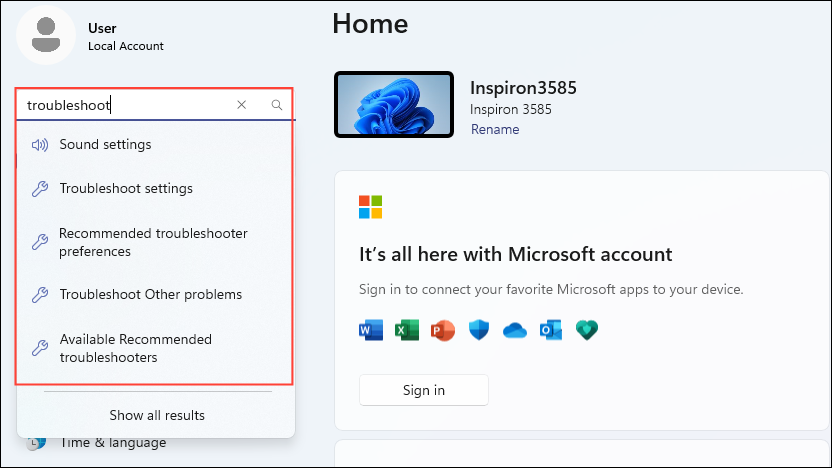
Step 3: Click on 'Other troubleshooters'.
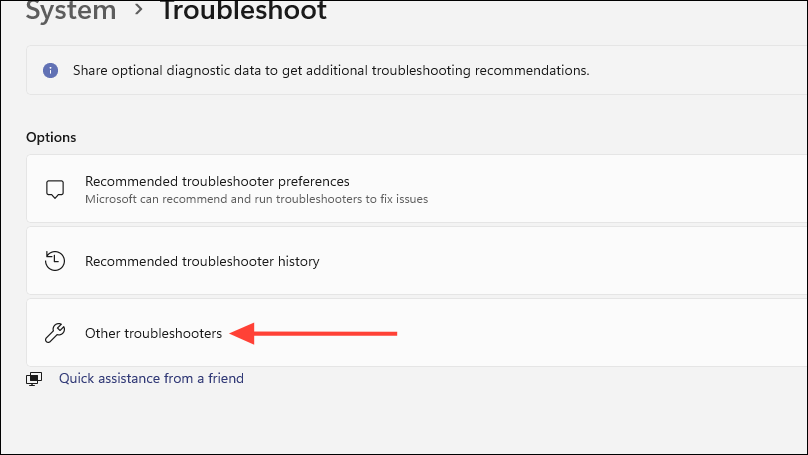
Step 4: Find 'Playing Audio' in the list and click 'Run' next to it.

Step 5: The 'Get Help' app will open and start diagnosing audio issues. Click 'Yes' to allow it to run diagnostics.

Step 6: Follow the on-screen instructions provided by the troubleshooter to resolve any detected issues.
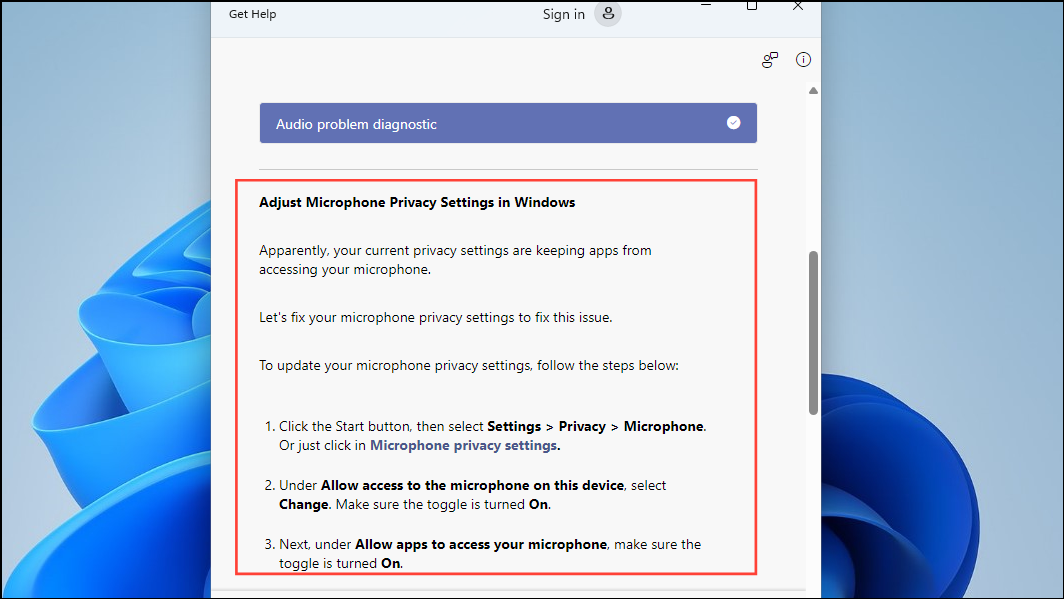
Enable disabled audio devices
Sometimes, audio devices may be accidentally disabled, leading to the error message. Ensuring that your audio devices are enabled can fix the problem.
Step 1: Open the Control Panel and set the 'View by' option to 'Large icons'.

Step 2: Click on 'Sound'.
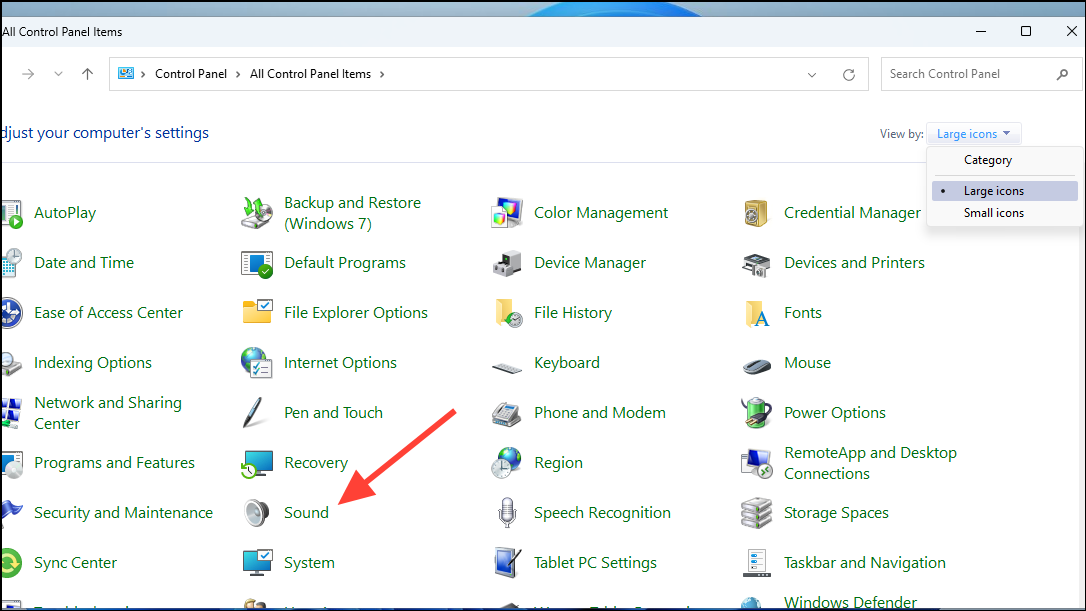
Step 3: In the 'Playback' tab, right-click in the blank area and ensure that 'Show Disabled Devices' is checked. If your speakers or headphones are listed as disabled, right-click on them and select 'Enable'.

Step 4: Right-click on your audio device again and select 'Properties'. Go to the 'Levels' tab and make sure the volume is turned up.

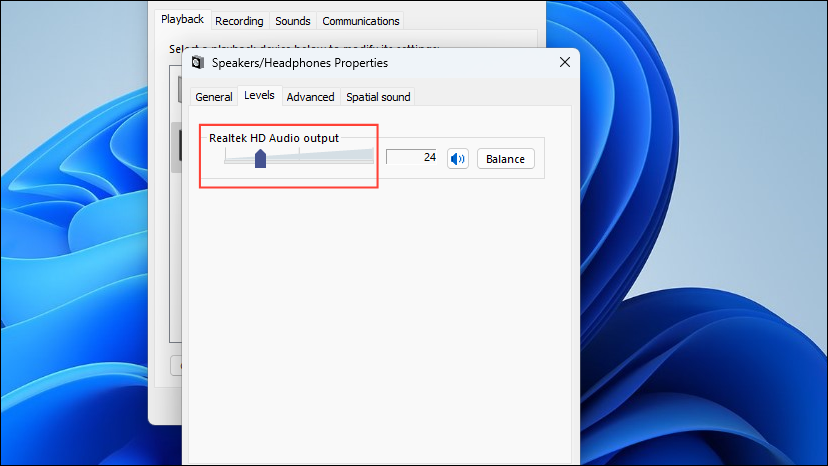
Step 5: In the 'Advanced' tab, uncheck the option 'Allow applications to take exclusive control of this device'. Click 'OK' to apply the changes.
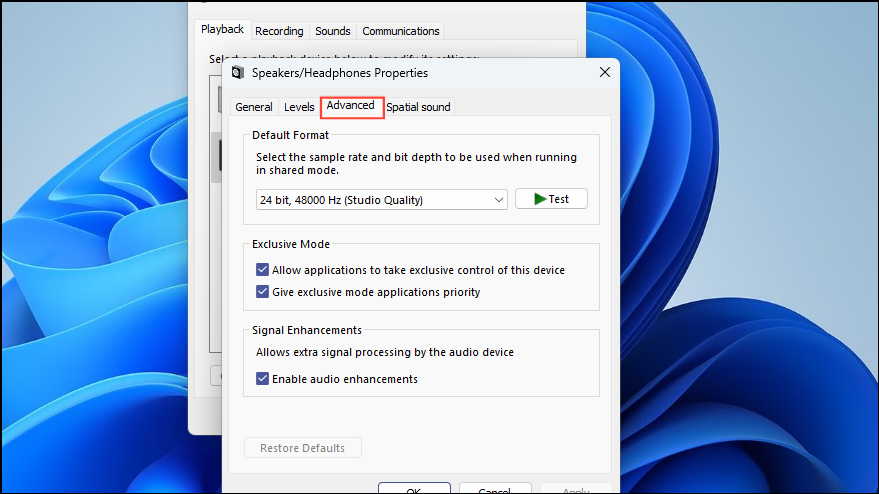

Step 6: Restart your computer and check if the audio issue is resolved.
Perform a DISM scan
If system files are corrupted, it can affect audio functionality. Running a Deployment Image Servicing and Management (DISM) scan can repair system images and potentially fix the error.
Step 1: Open the Start menu, type cmd, right-click on 'Command Prompt', and select 'Run as administrator'.
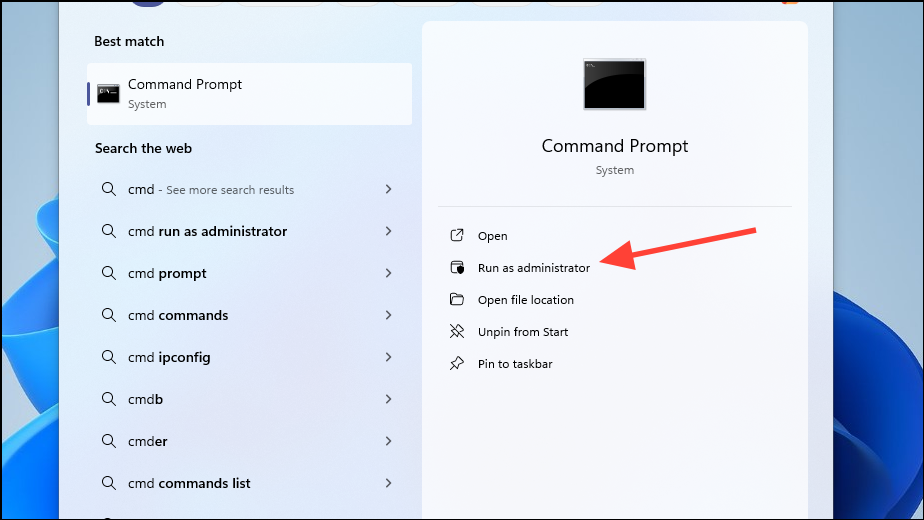
Step 2: In the Command Prompt window, type DISM /Online /Cleanup-Image /ScanHealth and press Enter.

Step 3: Wait for the scan to complete. If any issues are found, type DISM /Online /Cleanup-Image /RestoreHealth and press Enter to repair them.
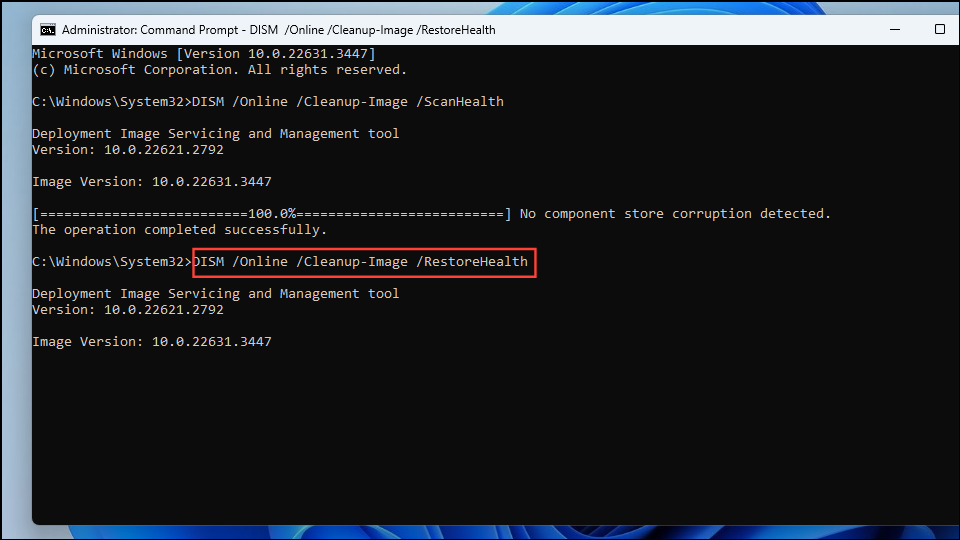
Step 4: After the process finishes, restart your computer and check if the error persists.
Perform a system restore
If the error started occurring recently, you can restore your system to an earlier point in time when the audio was working correctly. Note that you must have previously created a restore point.
Step 1: Open the Control Panel and click on 'Recovery'.
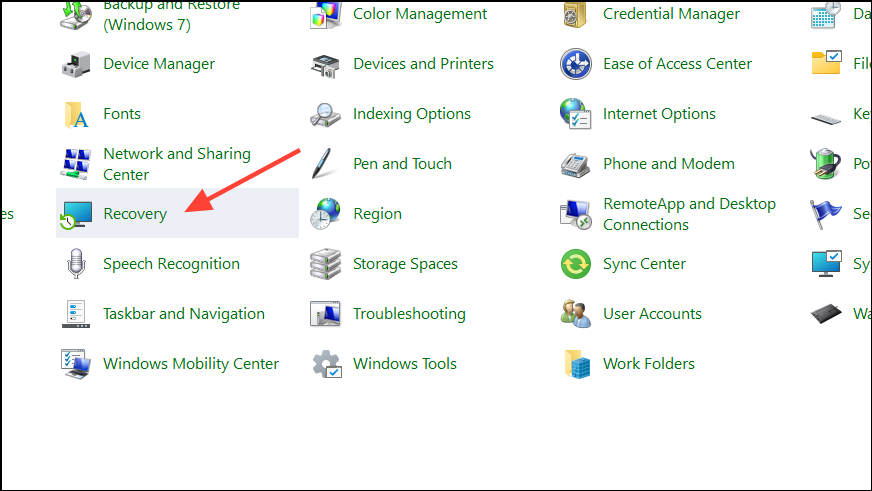
Step 2: Click on 'Open System Restore'.
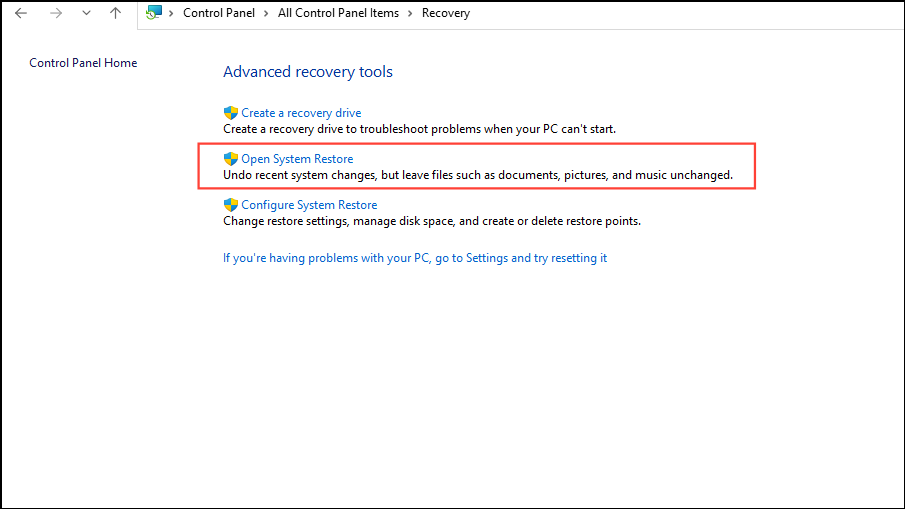
Step 3: In the System Restore window, click 'Next'.
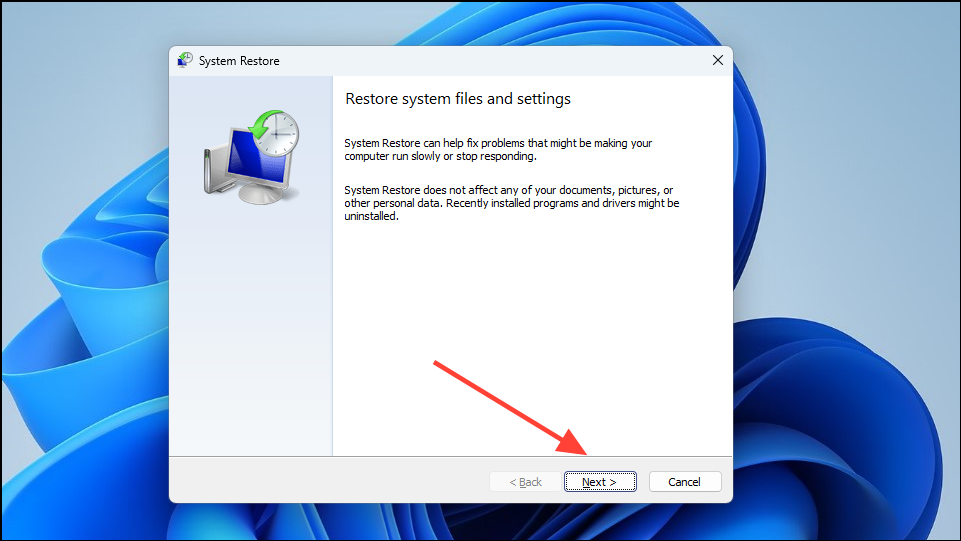
Step 4: Select a restore point from before the issue began and click 'Next'.
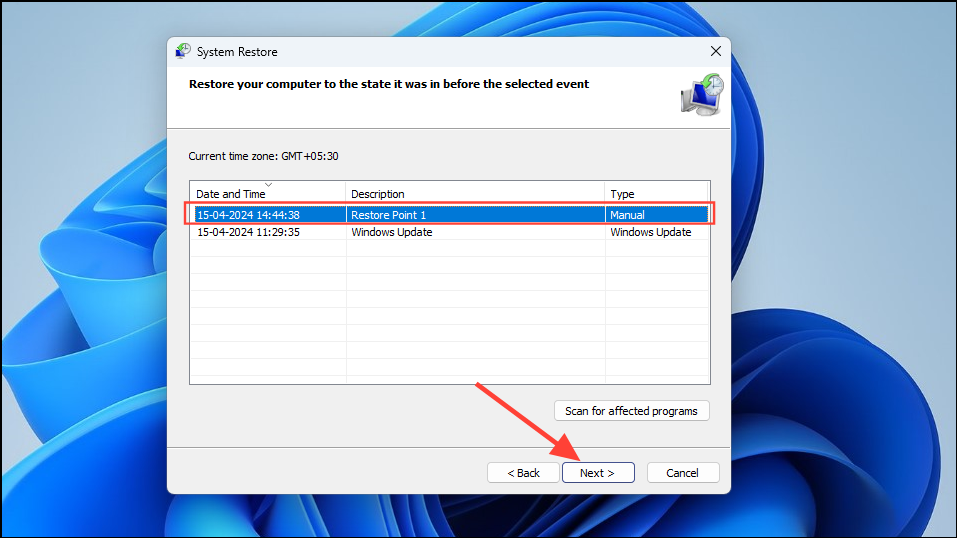
Step 5: Click 'Finish' to start the system restore process. Your computer will restart and revert to the selected restore point.
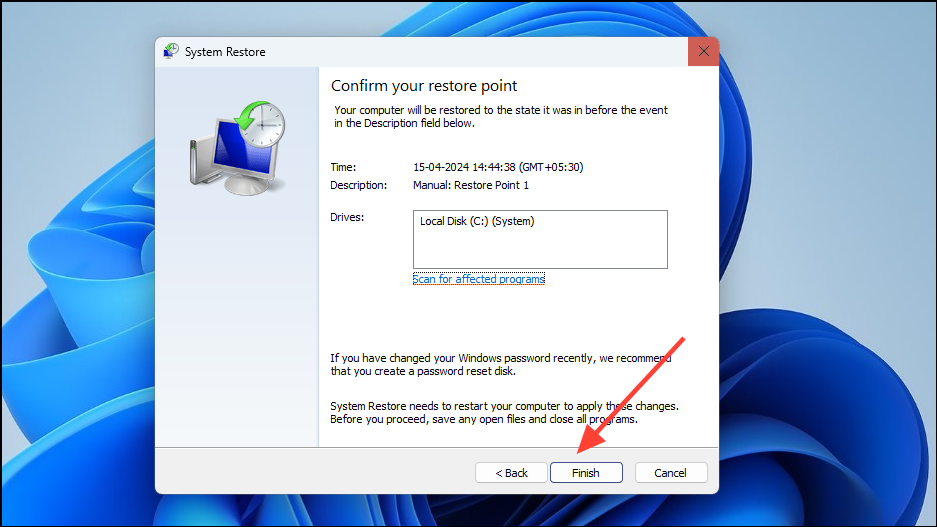
Experiencing the 'No audio output device is installed' error on Windows 11 can be frustrating, but by following the methods above, you should be able to restore your audio functionality. If none of these solutions work, consider performing a fresh installation of Windows 11 or checking your hardware for defects.


